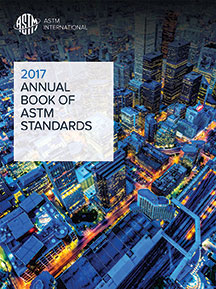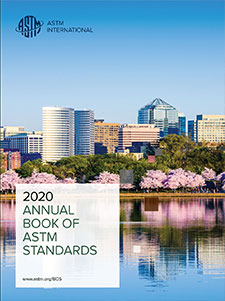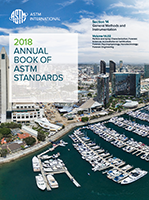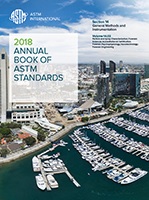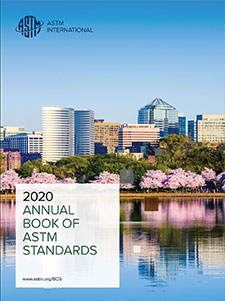Description
1.1 This test method covers a procedure for the determination of formaldehyde (HCHO) and other carbonyl compounds (aldehydes and ketones) in air. Other carbonyl compounds that have been validated for determination by this method include acetaldehyde, acetone, propanal (propionaldehyde), methacrolein, 2-butanone (methyl ethyl ketone), butyraldehyde, benzaldehyde, isovaleraldehyde, valeraldehyde, o-tolualdehyde, m-tolualdehyde, p-tolualdehyde, hexanal, and 2,5-dimethylbenzaldehyde. Acrolein and crotonaldehyde can not be determined quantitatively using the analytical procedure described in 10.2 due to the formation of multiple derivative peaks and the instability of the peak ratios . However, the procedure described in the Annex A has been used by the U. S. Environmental Protection Agency to estimate acrolein and crotonaldehyde concentrations in standard atmospheres following special precautions.
1.2 This test method involves drawing air through a cartridge containing silica gel coated with 2,4-dinitrophenylhydrazine (DNPH) reagent. Carbonyl compounds readily form stable derivatives with the DNPH reagent. The DNPH derivatives are analyzed for parent aldehydes and ketones utilizing high performance liquid chromatography (HPLC). The sampling procedure is a modification of U.S. EPA Method TO-11A (see 2.2).
1.3 This test method is based on the specific reaction of carbonyl compounds with DNPH in the presence of an acid to form stable derivatives according to the reaction shown in Fig. 1, (where: both R and R1 are alkyl or aromatic groups (ketones), or both, or either R or R1 is a hydrogen atom (aldehydes)). The determination of formaldehyde and other carbonyl compounds, as DNPH derivatives, is similar to that of U.S. EPA Method TO-11A in that it utilizes HPLC with UV detection as the analytical finish. The detection limits have been extended to other carbonyl compounds that can be determined as outlined in Section 10.2.4. This test method is suitable for determination of formaldehyde and other carbonyl compounds in the concentration range from approximately 10 ppb to 1 ppm (v/v).
1.4 The sampling method gives a time-weighted average (TWA) sample. It can be used for long-term (1 to 24 h) or short-term (5 to 60 min) sampling of air for formaldehyde.
1.5 This test method instructs the user on how to prepare sampling cartridges from commercially available chromatographic grade silica gel cartridges by the application of acidified DNPH to each cartridge.
1.6 The sampling flow rate, as described in this test method, has been validated for sampling rates up to 1.5 L/min. This flow rate limitation is principally due to the high pressure drop (>8 kPa at 1.0 L/min) across the user prepared silica gel cartridges which have a particle size of 55 to 105 μm. These cartridges are not generally compatible with battery-powered pumps used in personal sampling equipment (for example, those used by industrial hygienists).
1.7 Alternatively, pre-coated DNPH silica gel cartridges are also commercially available and may be substituted provided they can be demonstrated to perform equivalently. Some of these use silica gel of a larger particle size that results in a lower pressure drop across the cartridge. These low pressure drop cartridges may be more suitable for sampling air using battery-powered personal sampling pumps.
1.8 The values stated in SI units are to be regarded as the standard.
1.9 This standard does not purport to address all of the safety concerns, if any, associated with its use. It is the responsibility of the user of this standard to establish appropriate safety and health practices and determine the applicability of regulatory limitations prior to use.

FIG. 1 Reaction of Carbonyl Compounds
Product Details
- Published:
- 11/01/2009
- Number of Pages:
- 16
- File Size:
- 1 file , 250 KB
- Redline File Size:
- 2 files , 470 KB


